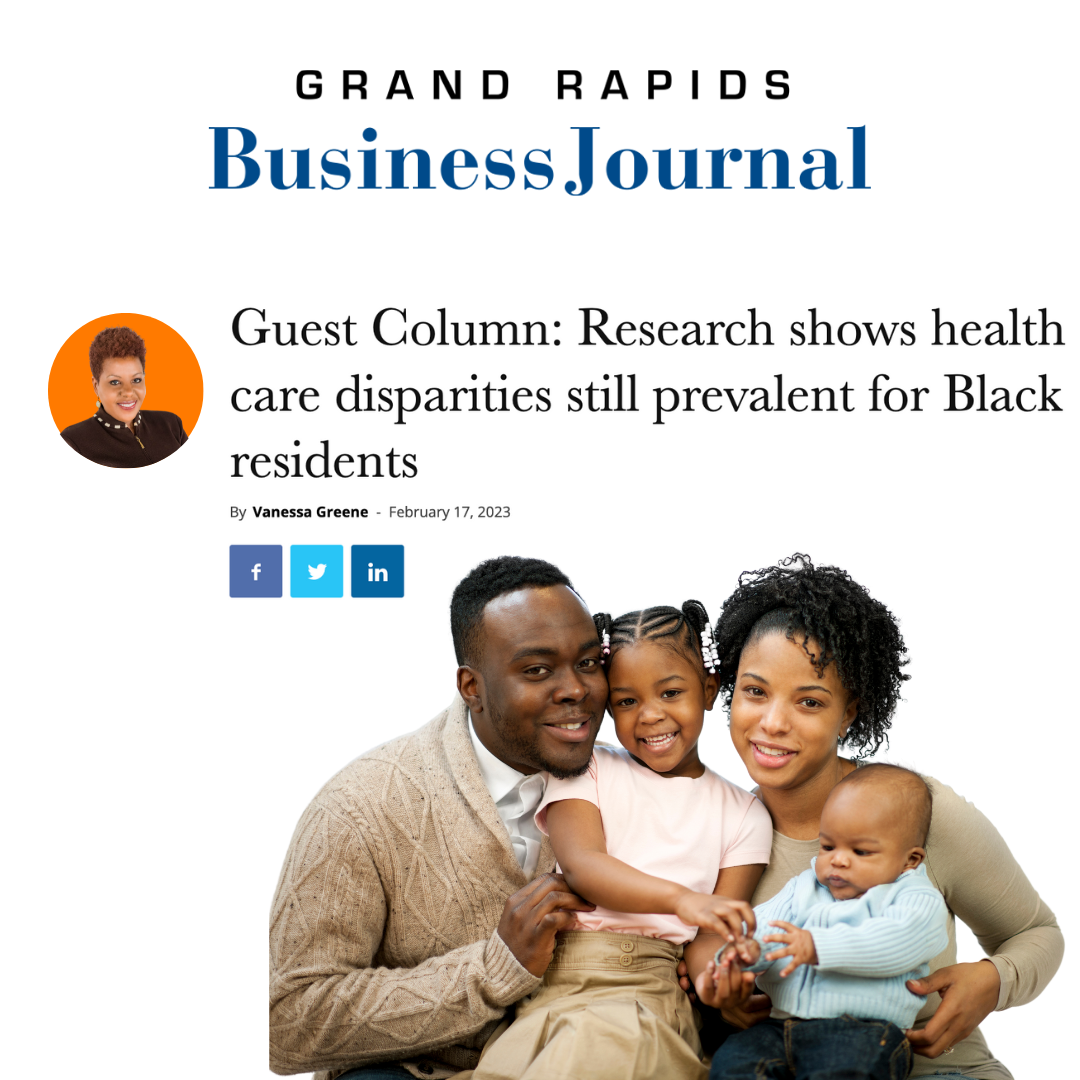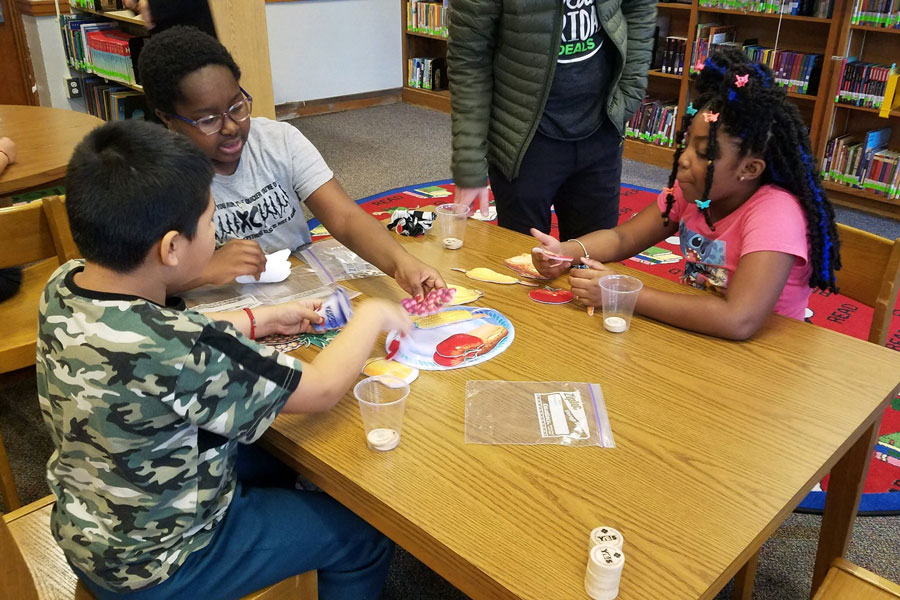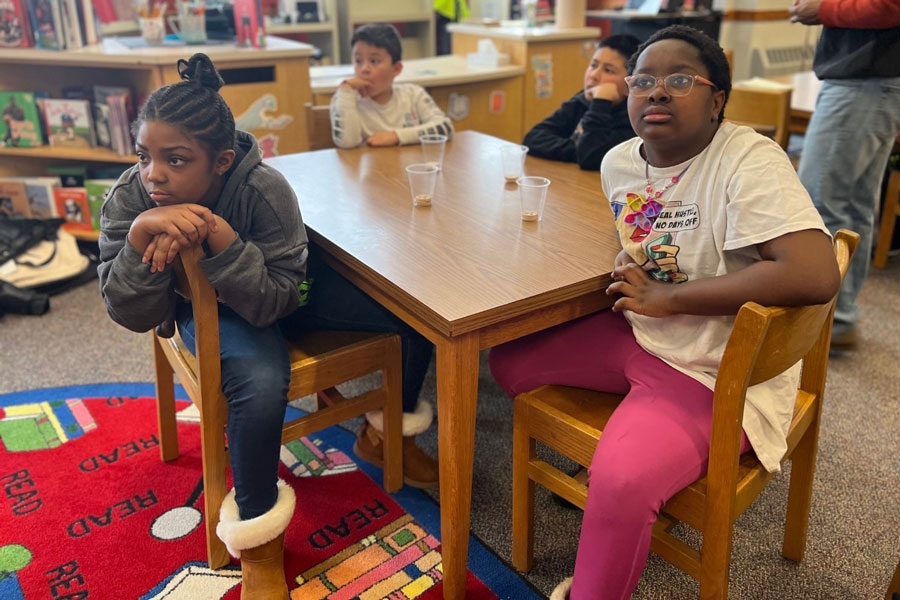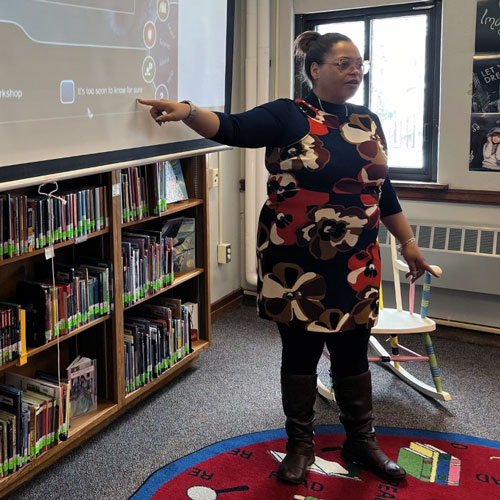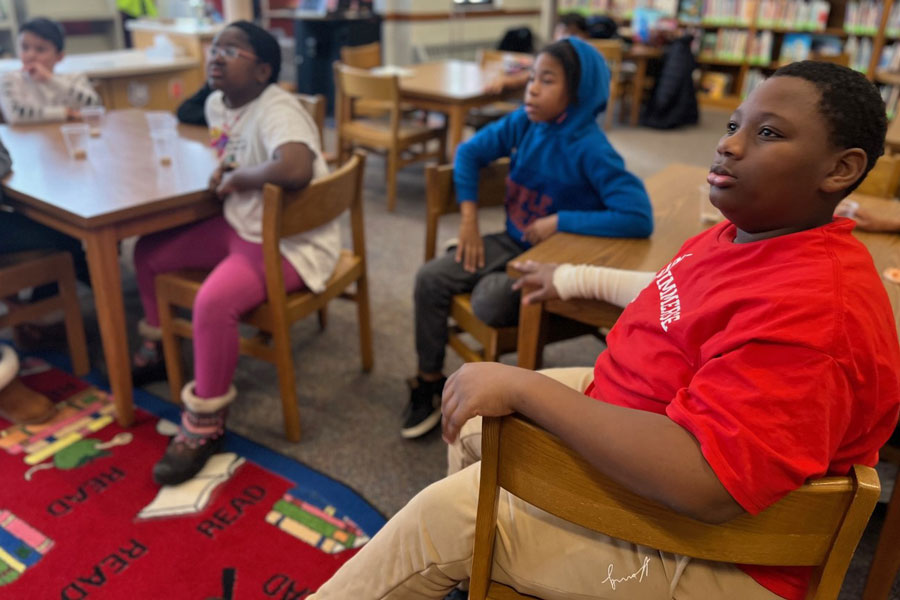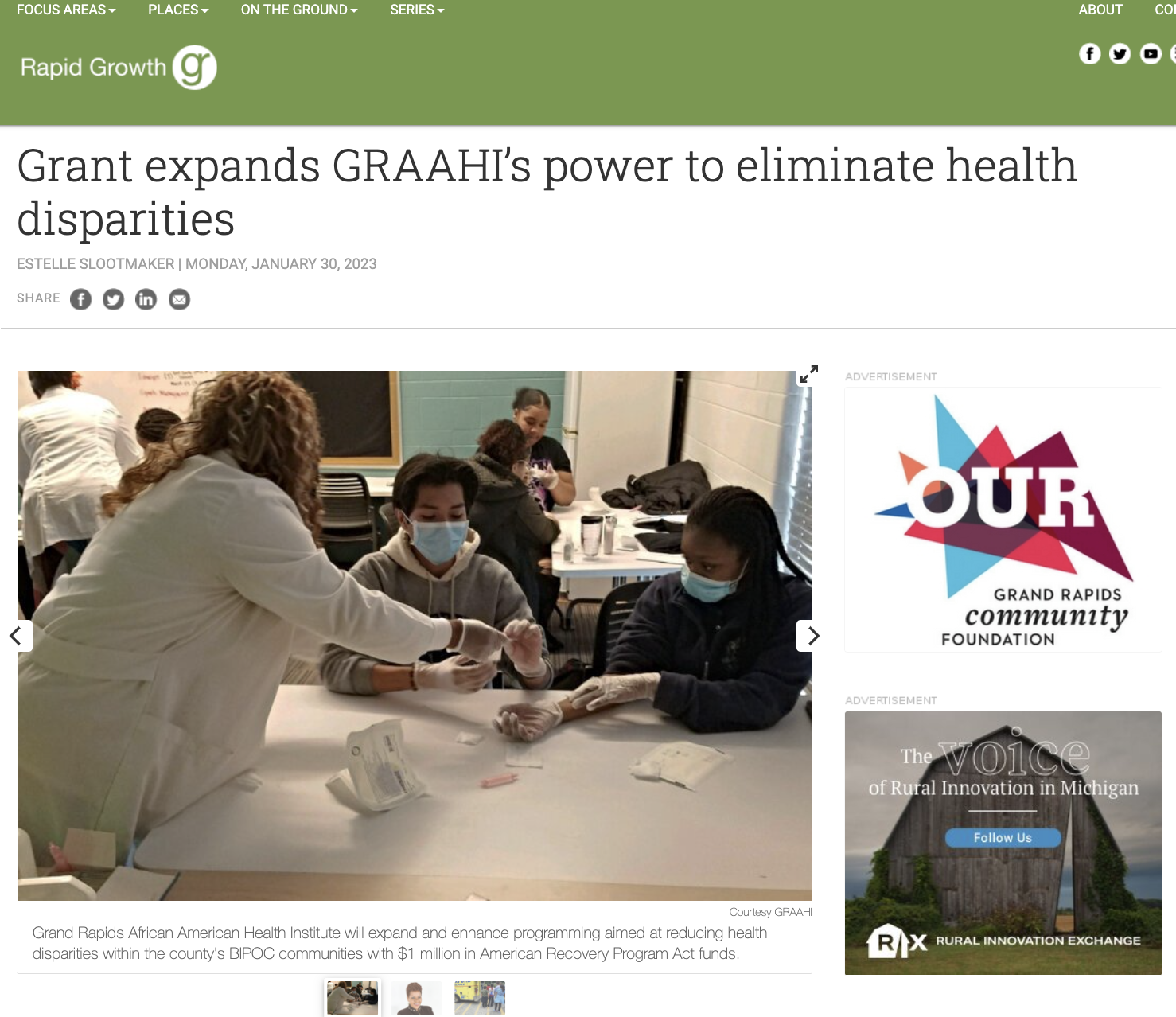By Vanessa Greene for the Grand Rapids Business Journal – Published February 17, 2023
It’s no secret that historically, health care outcomes for Black people and other non-white Americans have been an area of concern.
These numbers, from longstanding systemic inequities in the health care system, social determinants such as a lack of accessible health care facilities in some communities, to outright discrimination, can leave Black residents less likely to trust doctors and seek proper care. This last point was most evident during the height of the COVID-19 pandemic, when more Black residents were dying in part due to this distrust of the medical establishment.
At the Grand Rapids African American Health Institute, we recently undertook a much more local approach to this issue and have analyzed state data to showcase the severity of the disparities right here in our backyard of Kent County.
County-level disparities
Led by our research coordinator Andrae Ivy, MPH, we dove into state health care data from 2014 through 2020, examining 17 key health trends — from diabetes and obesity, to cancer, infant mortality and teenage births — and how they impacted Black, white and Hispanic residents in Kent County.
What quickly emerged was a troubling pattern. Among the biggest Kent County trends were:
- 15.1% of Black residents have diabetes vs. 10% of white residents
- Obesity rates were 41.6% for Black residents, compared to 28.5% for white residents and 30.1% for Hispanic residents.
- Heart disease mortality rates continue to climb for Black residents, reaching a new high of 541.3 per 100,000 residents. Stroke mortality also grew significantly from 2017 to 2020.
- 10.2% of Black residents could not see a doctor due to health care costs vs. 8.8% for white residents.
- Asthma rate for Black residents was 19% vs. 14.1% for white residents.
- Both the prostate cancer rate (135 per 100,000 men) and lung cancer rate (75.9 per 100,000 residents) for Black residents were significantly higher than rates for white residents.
- Infant mortality rate was 13.8 per 1,000 births for Black residents, nearly triple the 4.8 per 1,000 births rate for white residents.
- Teenage birth rates were much higher for Black residents (32.3 per 1,000 females ages 15-19) and Hispanic residents (27.3), compared to the 7.7 rate for white residents.
- Medical debt due to out-of-pocket costs is another major obstacle. According to a 2022 survey of Michigan residents by Epic-MRA and the advocacy group Consumers for Quality Care, among Black voters that have had their household finances seriously affected by medical debt, 80% say they’ve had medical bills go into collections.
Also, 65% of Black voters expressed concern that health care costs will be negatively impacted by long-term effects of COVID-19 in Michigan, compared to 58% of the state’s population overall. And 69% of Black Michiganders are concerned about expected impending loss of health care coverage expanded during the pandemic through the Affordable Care Act, compared to 51% of the state’s population overall.
Addressing inequities
While there is not one easy answer that will close these gaps in health care for Kent County’s Black residents, one thing is clear. Without major improvements to the systems surrounding access to health care in communities of color, these disparities in West Michigan and beyond will continue to persist.
Between changes at insurance companies to improve affordability of health care, increased state and federal support, and significant local community efforts, policymakers must prioritize implementing policies that improve health outcomes in the Black community.
Compared with whites, members of racial and ethnic minorities are less likely to receive preventive health services and often receive lower-quality care. They also have worse health outcomes for most conditions. To combat these disparities, legislators and health care professionals must explicitly acknowledge that race is a factor in health care.
Although the majority of individuals have at least one full-time worker in the family across racial and ethnic groups, people of color are more likely to live in low-income families that do not have coverage offered by an employer and have difficulty affording private coverage. According to a recent study by the Kaiser Family Foundation, the ongoing gaps in coverage for people of color could further widen the coverage gaps they already face and, in turn, exacerbate broader disparities in health and health care. With this in mind, efforts to increase insurance coverage and make health care affordable are crucial.
My organization works every day to educate the public on their health care rights and how to navigate the system, while also teaching preventive health care measures, as we work to help change these statistics. But officials at the city, state and federal levels, as well as health care systems and insurance companies, must recognize the serious inequities this research has exposed and work to address them. Improving disparities requires a collective effort across many systems and organizations.
Some examples include working to address key social determinants that can lead to poor health, offering more accessible and affordable health care options in communities of color that lack them, diversifying the health care workforce, proactively connecting patients with supportive social services and eliminating inequities in the quality of care. Additionally, it is important to monitor and document efforts toward reducing health disparities to determine what’s working.
If we’re ever going to deliver a realistic chance at equal access to quality health care for all residents of Kent County, we must work together vigorously as if our own lives depend upon it.
To read the article on GRBJ, click here>>.
To learn more about GRAAHI and the Health Equity Index, visit https://hei.graahi.org/.
